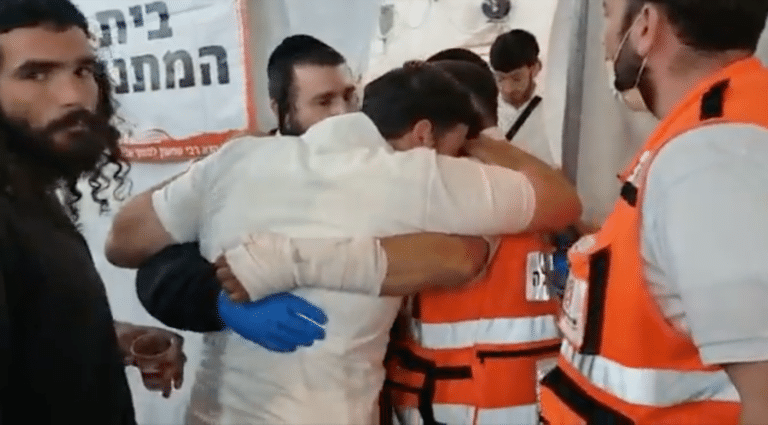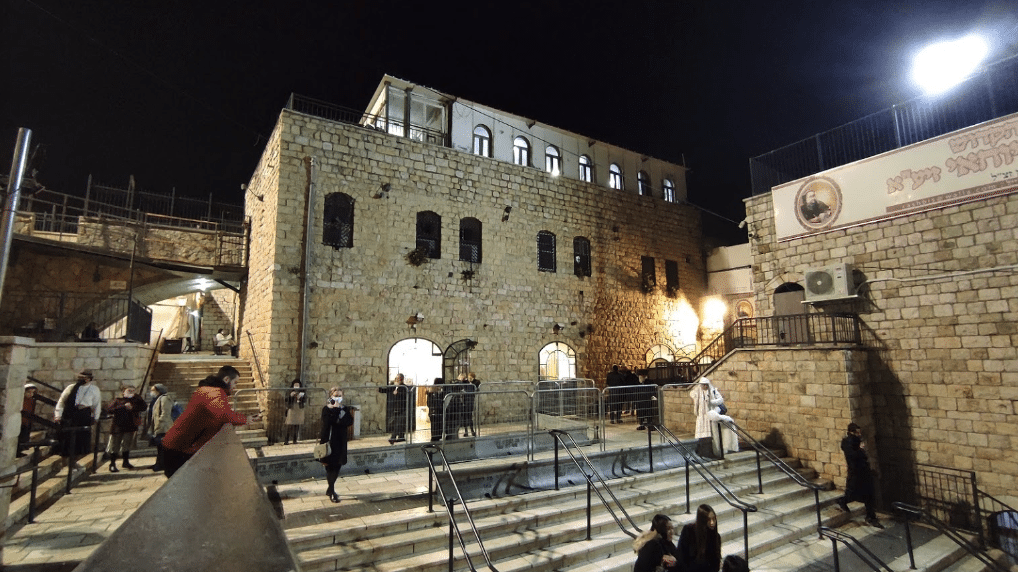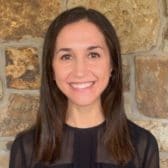
The massive gathering at Mount Meron that took place late last week was meant to be a joyous celebration of Lag BaOmer, the Jewish holiday that marks the end of a plague that killed 24,000 of Rabbi Akiva’s students (two thousand years ago) and the anniversary of the death of the great second-century sage Rabbi Shimon Bar Yochai. Instead, it turned out to be a horrific nightmare and the worst peacetime disaster in Israel’s history.
Forty-five people were killed and at least 150 people were injured when a stampede broke out at the celebration. The victims included more than a dozen children and teenagers (as young as nine years old) and 10 foreign citizens from the United States, Canada, the United Kingdom and Argentina. Among those who died were also fathers, brothers, rabbis and musicians.
The Meron tragedy is the worst civilian disaster in Israeli history in terms of the number of lives lost, surpassing the death toll of 44 from the 2010 Mount Carmel forest fire. On Sunday, Israel observed a day of mourning for the victims: flags were lowered to half-staff, and scheduled concerts and sporting events were canceled.
We are devastated by this horrific tragedy and mourn the loss of 45 people who were part of our extended Jewish family. Our hearts go out to the family and friends of those who lost their lives, and we pray for a refuah shleimah (a swift and complete recovery) for those injured. Along with Israelis and Jews around the world, we feel shocked and horrified by the scenes from this tragedy. As we mourn and continue to process this tragedy with our families, friends, students and communities, we wanted to share the following thoughts and reflections from our team.
Rabbi Shimon Bar Yochai’s ideas
In difficult times one of the places we turn to for guidance and wisdom is our tradition. In honor of Lag BaOmer, here is a story plus two powerful ideas attributed to Rabbi Shimon Bar Yochai that can help guide how we respond to this tragedy.
- The story of Rabbi Shimon Bar Yochai leaving the cave:
Watch this video from our friends at Aleph Beta about the story in the Talmud (Shabbat 33b) of Rabbi Shimon bar Yochai and his son, Rabbi Elazar, leaving the cave where they had been hiding for 12 years. After watching the video, what do you think is the message of this story? What do you think Rabbi Shimon learned from his second trip to the cave? Do you think this story applies to life today?
- “Anyone who helps a fellow Jew is considered as if he helped God himself.” (Midrash Tanchuma, Vayechi 5)
Rabbi Shimon Bar Yochai was a strong proponent of ahavat Yisrael, loving the Jewish people. As Rabbi David Wolpe has written, “Loving and embracing your people of origin is not to hate or look down on others; it is an affirmation made daily by members of almost every group, religious, ethnic, cultural and national.” How can we put Rabbi Shimon Bar Yochai’s teaching into practice and help our fellow Jews in the aftermath of this disaster?
- “There are three crowns: the crown of Torah, the crown of priesthood, and the crown of royalty, but the crown of a good name (shem tov) supersedes them all.” (Pirkei Avot 4:13)
Although Rabbi Shimon Bar Yochai recognized Torah study and prayer as essential components of Judaism, he believed that these activities are not enough by themselves and that they must be translated into good deeds. What does having a good name (shem tov) mean to you? What qualities do you want to be associated with in your community?
How Israelis mobilized to help
To give you an idea as to how rescue workers are triaging the scene in #Meron. This is Hatzalah's communication trailer. They're calling in units from across Israel. The only traffic being let into the area are rescue units. pic.twitter.com/FVUeK3W84w
— Johnny “I got my 💉” Kunza (@johnkunza) April 29, 2021
Israelis of all backgrounds — including religious and secular, Jews and Arabs — quickly rallied with support and help in the aftermath of the tragedy. United Hatzalah, an Israeli volunteer emergency medical services organization, called in units from across Israel. Air Force helicopters and IDF Unit 669, which specializes in airborne rescue and evacuations, came to help evacuate the wounded. Blood donations poured in from throughout the country: more than 2,000 Israelis donated blood the day after the disaster to help those who were injured receive the treatment they needed.
This is the Israeli spirit.
— Israel ישראל (@Israel) April 30, 2021
Across Israel, a show of solidarity on an extremely hot and sad day.
People are lining up to donate blood to help those injured in the #MountMeron disaster.pic.twitter.com/IbQVaNX410
Israeli media reported that residents of Druze villages located near Meron “offered to host people who would not be able to return home before Shabbat in their own homes.” Meanwhile, Arab local councils in the area set up refreshment stations with water, fruit and cold drinks for people leaving Mount Meron after the disaster.
In Tamra, a refreshment station is being set up for the evacuees from Mt Meron who can rest, eat, drink and contact the families. There are many initiatives of Arab Israelis coming together, even now during the Ramadan fast. Touching solidarity in the midst of such tragedy pic.twitter.com/UXSfmxDsjd
— יוסף חדאד – Yoseph Haddad (@YosephHaddad) April 30, 2021
Reflections from Dr. Noam Weissman

In 2004 on Lag Baomer, my friends from yeshiva and I spent a weekend in Meron. We joined hundreds of thousands of Jews who gathered together for camping, praying, singing and celebrating. They were from all walks of life: Hassidic and non-Hassidic Jews, free-spirited and Phish Heads and more Haredi and traditional, Jews from Israel, the U.S., South Africa and around the world. Despite our different backgrounds, all of us had come together to celebrate Jewish spirituality and the mysticism Rabbi Shimon Bar Yochai helped reveal to the world.
I remember the sheer magnitude of people who had gathered in one small space and the dramatic effect this had on me. In the sea of people, it almost felt like my feet were levitating. I felt like I was brought to a different place spiritually. I still bring to mind the powerful atmosphere I experienced at Meron to charge me every now and then, and know that millions of other people have experienced the same thing.
Even though I don’t know anyone who attended Meron this year personally, and live thousands of miles away in South Florida, I feel devastated by this tragedy and the loss of 45 Jewish lives. The fact that Lag BaOmer marks the end of a plague from two thousand years ago that killed Rabbi Aviva’s students and is meant to be the ultimate celebratory day, makes this disaster even more painful for many of us.
During painful moments like this one, I remember the Jewish concept of yefashfesh b’maasav (examining our own actions). We may not always have control over the events and tragedies that befall us, but we can control our next steps. For me, as a Jewish educator, this means teaching people about this horrifying tragedy and creating meaningful opportunities for people to connect with one another during this time of mourning. We pray for a refuah shleima (complete recovery) for those who are injured from this tragedy and that all of the families who lost loved ones feel the warmth of their Jewish brothers and sisters around the world.
How to help
If you want to support the families of the victims, you can donate through The Chesed Fund. You can also help by supporting United Hatzalah, which has 6,000 volunteers including EMTs, paramedics and doctors who respond to medical emergencies throughout Israel.
Concluding thoughts
The Jewish response of yefashfesh b’maasav (examining our own actions) in the wake of tragedy is an empowering shift we can all make following the Meron disaster. In times of darkness and suffering, each one of us can ask ourselves how we can do better and contribute more light to our communities. How can we help ensure events like this won’t happen again? When there is a catastrophe in the Jewish community, how do we respond? Prima facie, this will look different for everyone: some of us might pray more or study more Torah, while others will want to give more Tzedakah or carry out an extra act of kindness. Yet, by making this intentional shift in the most difficult moments, each one of us can follow the footsteps of the Jewish tradition, which is to help improve our communities, be kinder to each other, and focus our attention on how we want to respond.
Originally Published May 4, 2021 08:38AM EDT
